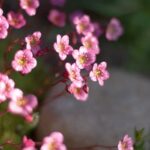Are you looking to enhance your outdoor space with unique and eye-catching elements? Trap rock landscaping ideas may be just what you need to transform your garden into a stunning oasis. Trap rock is a versatile and durable material that can add texture, color, and visual interest to any landscape design. From garden paths to water features, trap rock can be used in a variety of ways to create a beautiful and functional outdoor space.
One of the key benefits of using trap rock in landscaping is its durability and low maintenance requirements. Unlike other types of natural stone, trap rock is resistant to weathering, erosion, and staining, making it an ideal choice for outdoor applications. In addition to its practical benefits, trap rock also comes in a range of colors and textures, allowing for endless design possibilities.
When it comes to incorporating trap rock into your landscaping design, there are various types of this versatile material to choose from. Whether you prefer the rugged look of crushed trap rock or the polished finish of tumbled trap rock, there are options to suit every style and preference. In the following sections, we will explore different ways to use trap rock in landscaping and provide tips for designing with this unique material.
Benefits of Using Trap Rock in Landscaping
Trap rock landscaping ideas can help you create a stunning outdoor space that is both visually appealing and low-maintenance. Trap rock, also known as basalt, is a volcanic rock that is commonly used in landscaping due to its durability and natural beauty. In this section, we will explore the benefits of using trap rock in landscaping and how it can enhance the overall look of your outdoor space.
1. Durability: Trap rock is a strong and sturdy material that can withstand heavy foot traffic, making it an excellent choice for high-traffic areas such as garden paths and walkways.
2. Low Maintenance: Unlike organic materials like wood chips or mulch, trap rock requires minimal maintenance. It does not decompose or break down, reducing the need for frequent replacement.
3. Versatility: Trap rock comes in various sizes and colors, allowing for endless design possibilities. Whether you prefer a naturalistic look or a more modern aesthetic, trap rock can be used to achieve the desired effect.
When incorporating trap rock into your landscaping design, consider the following tips and techniques:
– Use different sizes and shapes of trap rock to create visual interest.
– Combine trap rock with other materials such as gravel or pavers to add texture and depth to the landscape.
– Consider using trap rock as an edging material along flower beds or lawn areas for a clean and polished look.
By taking advantage of these benefits and implementing creative trap rock landscaping ideas, you can transform your outdoor space into a beautiful and functional environment that will be enjoyed for years to come.
Types of Trap Rock for Landscaping
Trap rock is an excellent material for landscaping due to its durability, texture, and natural beauty. There are different types of trap rock that can be used in landscaping to create stunning outdoor spaces. Some popular types of trap rock for landscaping include basalt, andesite, and diabase. Each type has its own unique color and texture, giving you a variety of options to choose from when designing your landscape.
Basalt trap rock is known for its dark grey to black color and fine-grained texture, making it a popular choice for creating pathways, driveways, and other hardscaping elements. Andesite trap rock typically comes in shades of grey and brown with a medium to coarse texture, making it versatile for use in various landscaping designs.
Diabase trap rock features a dark green to black color with a fine to medium texture, ideal for adding depth and contrast to garden beds and borders.
When selecting the right type of trap rock for your landscaping project, consider the overall aesthetic you want to achieve as well as the intended use of the material. Whether you are looking to create a natural-looking garden path or add visual interest to your outdoor space, there is a type of trap rock that will suit your needs.
Incorporating different types of trap rock into your landscaping design can add depth, texture, and visual interest to your outdoor space. By understanding the characteristics of each type of trap rock, you can make informed decisions on how best to use them in your landscape design.
| Types of Trap Rock | Description |
|---|---|
| Basalt | Dark grey to black color with fine-grained texture, ideal for pathways and driveways. |
| Andesite | Shades of grey and brown with medium to coarse texture, versatile for various landscaping designs. |
| Diabase | Dark green to black color with fine to medium texture, perfect for adding depth and contrast to garden beds. |
Designing With Trap Rock
Trap rock is a versatile and beautiful material that can add texture, color, and depth to any landscape design. When it comes to designing with trap rock, there are several tips and techniques that can help you make the most of this unique landscaping material.
One of the key considerations when using trap rock in your landscaping is to consider its natural texture and color. Trap rock has a rough, angular texture and typically comes in shades of gray, black, or red. This makes it an ideal choice for creating contrast in your landscape design. You can use trap rock to create borders, edging, or as a decorative element in flower beds or around trees.
Another important technique when designing with trap rock is to consider its versatility. Trap rock can be used in a variety of ways in your landscape design, from creating pathways and walkways to adding visual interest to water features or garden beds. Its durability also makes it an excellent choice for high-traffic areas such as driveways and patios.
When incorporating trap rock into your landscape design, it’s essential to consider the overall aesthetic you want to achieve. Whether you prefer a formal, structured look or something more natural and organic, trap rock can be used to create the perfect effect. By carefully selecting the size, shape, and color of the trap rock you use, you can tailor your design to suit your specific style preferences.
| Trap Rock Landscaping Tips | Techniques |
|---|---|
| Consider natural texture and color | Select appropriate size and shape |
| Utilize versatility for different applications | Create visual interest in various areas of the landscape |
| Think about overall aesthetic desired | Tailor design based on style preferences |
Incorporating Trap Rock Into Garden Paths and Walkways
When it comes to adding a touch of natural beauty to your garden, incorporating trap rock into garden paths and walkways can be a game-changer. The durability and versatility of trap rock make it an excellent choice for creating stunning and functional pathways in your outdoor space. Here are some ideas for incorporating trap rock into your garden paths and walkways:
1. Pathway Borders: Create defined borders for your garden paths using trap rock in contrasting colors. This not only adds visual interest but also helps prevent erosion of the surrounding soil.
2. Mosaic Patterns: Use different shapes and sizes of trap rock to create intricate mosaic patterns along your garden paths. This unique design technique can add a whimsical touch to your landscaping.
3. Decomposed Granite Mix: Combine trap rock with decomposed granite to create a stable and low-maintenance surface for your garden paths. The natural texture and color variation of the trap rock will add depth and character to the pathway.
4. Step Stones: Incorporate large pieces of trap rock as stepping stones within the garden path or walkway. This creates an organic look while providing a practical way to navigate through the garden.
Whether you’re aiming for a rustic, naturalistic feel or a modern, minimalist look, trap rock landscaping ideas can elevate the design of your garden paths and walkways. With proper planning and implementation, you can transform these functional elements into captivating features that enhance the overall aesthetic of your outdoor space.
Creating Eye-Catching Features With Trap Rock
One way to make an eye-catching feature in your landscape with trap rock is by creating a unique rock garden. Trap rock’s natural colors and textures make it perfect for adding visual interest to any garden.
You can use different sizes and shapes of trap rock to build terraced walls, create mounds, or even construct a rock sculpture. By incorporating a variety of plants among the trap rock, you can create a beautiful and low-maintenance garden that will be a focal point in your yard.
Water Features
Another way to incorporate trap rock into your landscaping is by adding water features. Whether it’s a small pond, a waterfall, or a stream, the addition of trap rock can enhance the natural look of the water feature. The rough texture of trap rock provides a picturesque contrast to the smoothness of water and can add interest to any outdoor space.
Outdoor Fire Pit
A popular trend in landscaping is the addition of an outdoor fire pit, and trap rock can be used to create a stunning fire pit area. Surrounding the fire pit with carefully arranged trap rocks not only gives it a rustic appearance but also creates a safe barrier between the flames and surrounding vegetation. It also serves as additional seating where guests can gather around and enjoy the warmth of the fire on cool evenings.
By incorporating these eye-catching features using trap rock into your landscape design, you can take your outdoor space to the next level while enjoying the low maintenance and durability that comes with using this natural material. Whether it’s creating a unique garden, adding water features, or building an outdoor fire pit, trap rock offers endless possibilities for enhancing your landscape.
Maintenance and Care for Trap Rock Landscaping
Once you have incorporated trap rock into your landscaping, it is important to understand the maintenance and care required to keep it looking its best. One of the great benefits of using trap rock in landscaping is its low maintenance nature. Unlike mulch or other organic materials, trap rock does not need frequent replacement or replenishment. However, some basic care can ensure that your trap rock landscaping stays pristine.
One important aspect of maintaining trap rock landscaping is regular weed control. While trap rock does a good job at suppressing weed growth, some weeds may still find their way through. Regularly inspect your trap rock beds and remove any weeds that may have sprouted. Applying a layer of landscape fabric before laying down the trap rock can also help prevent weed growth.
Another key aspect of caring for trap rock landscaping is ensuring proper drainage. Trap rock is porous, which means it allows water to pass through easily. However, over time, dirt and debris can accumulate on top of the trap rock, inhibiting proper drainage. Periodically raking or sweeping the surface of the trap rock can help prevent waterlogging and maintain efficient drainage.
Lastly, occasional replenishment may be necessary to maintain the appearance of your trap rock landscaping. Over time, due to foot traffic or natural settling, the layer of trap rock may become thinner in certain areas. Adding a thin layer of fresh trap rock as needed can revitalize the look of your landscaping.
Incorporating these simple maintenance and care practices into your routine will ensure that your trap rock landscaping continues to enhance the beauty of your outdoor space for years to come.
Stunning Examples of Trap Rock Landscaping in Real Gardens
When it comes to trap rock landscaping, there are numerous stunning examples of how this versatile material can be used to enhance the beauty of a garden. From garden paths to eye-catching features, trap rock can add texture, color, and visual interest to any outdoor space. Below are some real-life examples of trap rock landscaping that will inspire you to incorporate this unique material into your own landscape design.
Garden Paths and Walkways
One of the most popular uses for trap rock in landscaping is in creating garden paths and walkways. The natural texture and rich color of trap rock make it an excellent choice for adding visual appeal to these functional elements of a garden. Whether used in a formal geometric pattern or a more organic, free-form design, trap rock can create a sense of movement and flow throughout the garden while also providing a durable surface for foot traffic.
Eye-Catching Features
Trap rock can also be used to create eye-catching features within a garden. From dry riverbeds to decorative boulders, incorporating trap rock into the landscape design can add drama and focal points that draw the eye and create visual interest. Whether used as a standalone feature or as part of a larger composition, trap rock can bring a sense of depth and contrast to the garden that enhances its overall aesthetic.
Water Features
Another stunning use for trap rock in landscaping is in the construction of water features such as ponds, waterfalls, or fountains. Due to its durability and ability to withstand water exposure, trap rock is an ideal material for creating natural-looking aquatic elements within the garden. When paired with lush planting and other natural materials, trap rock can help create a tranquil oasis that adds ambiance and serenity to any outdoor space.
Conclusion
In conclusion, trap rock landscaping offers a wide range of benefits and opportunities for creating stunning outdoor spaces. From its durability to its versatility, trap rock is an attractive option for enhancing the beauty and functionality of any yard or garden. With the right design and careful maintenance, trap rock can truly elevate the aesthetic appeal of outdoor areas.
When incorporating trap rock into your landscaping, it’s important to consider the various types available and how they can be used effectively. Whether you’re looking to create garden paths, eye-catching features, or simply add a touch of natural elegance to your yard, trap rock can be tailored to suit your specific needs.
By exploring different colors, sizes, and textures of trap rock, you can design a landscape that reflects your personal style and enhances the overall look of your property.
As you seek inspiration for your own trap rock landscape, consider seeking out real examples in gardens and outdoor spaces. By studying how others have used trap rock effectively, you can gather ideas for incorporating this versatile material into your own landscaping.
Whether it’s through online resources or visiting local botanical gardens, finding real-life examples can provide valuable insights and spark creativity for turning your outdoor space into a beautiful and functional oasis. As you embark on this journey, remember that with the right planning and execution, trap rock landscaping has the potential to transform any yard or garden into a visually stunning masterpiece.
Frequently Asked Questions
What Do You Put Down Before Rocks for Landscaping?
Before placing rocks for landscaping, it’s important to put down a landscape fabric or weed barrier. This helps prevent weed growth and maintain the aesthetics of the rock installation.
What Color Is Trap Rock?
Trap rock typically comes in a dark reddish-brown or deep blue color. The exact shade can vary depending on the specific location where the trap rock is quarried.
What Is Black Trap Rock?
Black trap rock is a type of igneous rock that is formed from volcanic activity. It is known for its dark black color and is commonly used in construction and landscaping due to its durability and attractive appearance. It is often used as decorative gravel or in drainage systems.

Welcome to my gardening blog! I am passionate about plants and enjoy sharing my knowledge and experiences with others. In this blog, I will write about everything related to gardening, from tips on how to get started to updates on my own garden projects.





